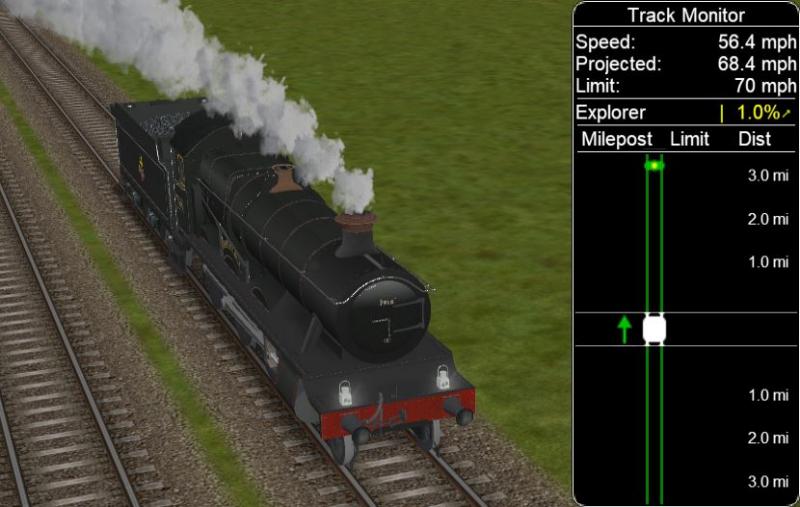I agree:
I don't know any cases of appearance of such indicators in any cabs.
Since real driver
feels acceleration and, often(not always)-gradient(there's a risk of
illusion), there's no need of these instruments in real life.
Without computer, prediction of speed is difficult to realise, and anything can change, during said 60 seconds, so why?
The gradient is drawn at "route charts", we call the "regime maps/режимные карты" so, to drive efficiently, Drivers must remember the track's profile at least in general, or refer with a copy of chart, that he carries within other work documentation pack at every ride.
This charts has to be analysed and explained, along with tachograph's records, during debriefnigs and trainings of locomotive crews at depots.
The measures to increase the efficency and energy-saving of train-hauling was developed this way.
Accelerometers and dynamometers are usual in modern American diesels and European electic haulers.
So, indicators, we discuss are useful in context of training the driving skills in condition of abcence of real feelings, since we are sitting beside our PC instead of driver-cab.
The other thing, what is absent-the feeling of slack, as bringing heavy freight train to move, notching-up controller must be carried out, lookin at feeling of start/end of train's slack, to avoid jerks and even breaking of couplers.
The same case-the driving of long train at differing profile of track, so You nened to feel,
when comprression or strathing of train is needed to perform, for driving smoothly.


 Log In
Log In Register Now!
Register Now! Help
Help









